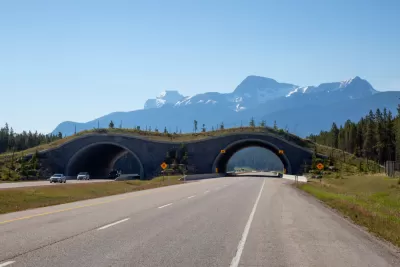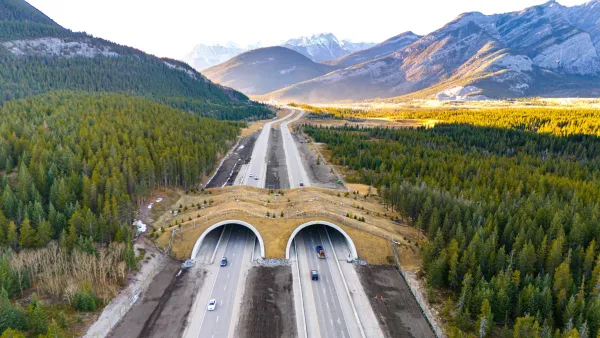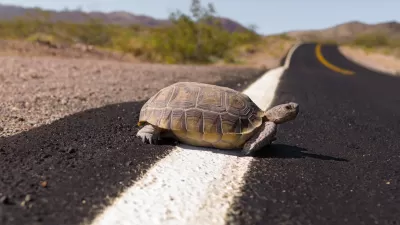If wildlife crossings seem to expensive to build with so many infrastructure needs around the country, consider the cost of not building safe passage for animals.

Motorists kill an estimated one to two million large animals every year in the United States. Starre Vartan writes about a remarkably successful method for preventing those deaths: wildlife under- and overpasses.
"Studies that looked at a cross-section of native species' deaths on highways in Florida, bandicoots and wallabies in Australia, and jaguars in Mexico, just to name a few, all show that wildlife crossings save money and lives, both human and animal," according to Vartan.
Yes, humans die, about 200 every year, when they drive their cars into large animals. And all of these collisions are expensive. "Deer-car collisions cost an average of $8,190, an elk-vehicle collision is about $25,319, and a moose-vehicle collision is $44,546, taking into consideration human injuries and death, towing, vehicle repair, investigation of the accident by local authorities, and carcass disposal, according to a paper from the Western Transportation Institute (WTI) at Montana State University."
Vartan highlights one project in Washington State in particular as an example of how the idea of wildlife overpasses are catching on. The news coverage of the story includes lot of on-scene photography by National Geographic photographer Joe Riis.
FULL STORY: How wildlife bridges over highways make animals—and people—safer

Planetizen Federal Action Tracker
A weekly monitor of how Trump’s orders and actions are impacting planners and planning in America.

San Francisco's School District Spent $105M To Build Affordable Housing for Teachers — And That's Just the Beginning
SFUSD joins a growing list of school districts using their land holdings to address housing affordability challenges faced by their own employees.

The Tiny, Adorable $7,000 Car Turning Japan Onto EVs
The single seat Mibot charges from a regular plug as quickly as an iPad, and is about half the price of an average EV.

Engineers Gave America's Roads an Almost Failing Grade — Why Aren't We Fixing Them?
With over a trillion dollars spent on roads that are still falling apart, advocates propose a new “fix it first” philosophy.

The European Cities That Love E-Scooters — And Those That Don’t
Where they're working, where they're banned, and where they're just as annoying the tourists that use them.

Map: Where Senate Republicans Want to Sell Your Public Lands
For public land advocates, the Senate Republicans’ proposal to sell millions of acres of public land in the West is “the biggest fight of their careers.”
Urban Design for Planners 1: Software Tools
This six-course series explores essential urban design concepts using open source software and equips planners with the tools they need to participate fully in the urban design process.
Planning for Universal Design
Learn the tools for implementing Universal Design in planning regulations.
Borough of Carlisle
Smith Gee Studio
City of Camden Redevelopment Agency
City of Astoria
Transportation Research & Education Center (TREC) at Portland State University
City of Camden Redevelopment Agency
Municipality of Princeton (NJ)





























